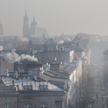By 2030, all beverage packaging released to the market by Coca-Cola system companies is to be collected and recycled. Half of the composition of the new bottles will also come from recycling. This is the axis of the „World Without Waste” initiative announced in Davos in January 2018. „(„Waste Free World”).
The project started in 2018. But Coca-Cola has been taking care of the ecology for a long time.
“We are not only the leader on the non-alcoholic beverages market in Poland, but we also belong to the group of socially responsible companies. Sustainable development is part of our company’s DNA, and its implementation begins with specific, publicly announced and measurable commitments,” explains Jaak Mikkel, head of Coca-Cola HBC Poland.
“In September this year, we announced our „2025 Sustainability Targets”, which are a continuation of our long-term strategy to reduce environmental impact, develop our portfolio by e.g. reducing the calorific value of our products or the impact on the communities in which we operate. As for the environment, we reduce CO2 emissions from year to year, reduce water consumption per litre of product and encourage our business partners to do the same,” adds Jaak Mikkel.
Water in the first place
On a global scale, the company’s water consumption is expected to fall by a further 20 percent over the next 12 years, particularly in areas with water scarcity. In order to achieve these goals, Coca-Cola HBC Polska has undertaken to further reduce water consumption and take care of complete wastewater treatment, and to cooperate with suppliers in order to obtain information on water consumption related to the acquisition of agricultural products (e.g. sugar), among other things.





















